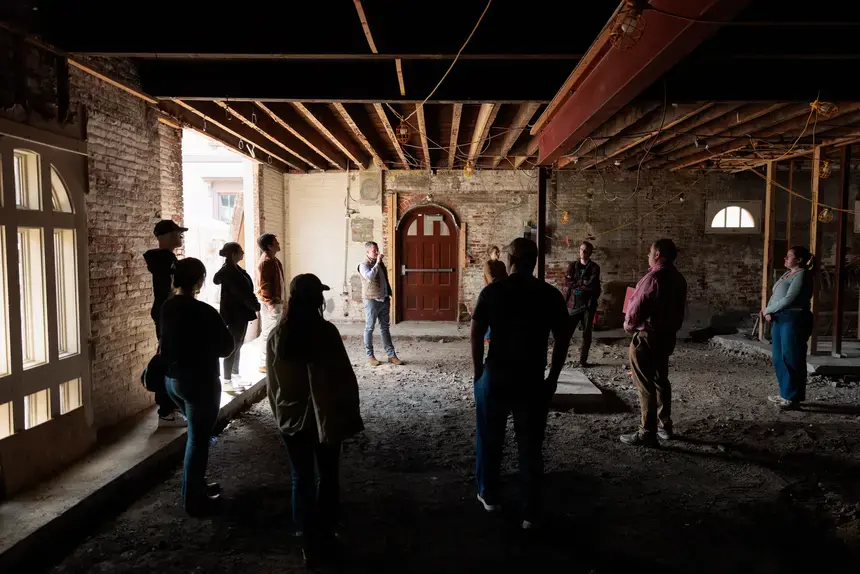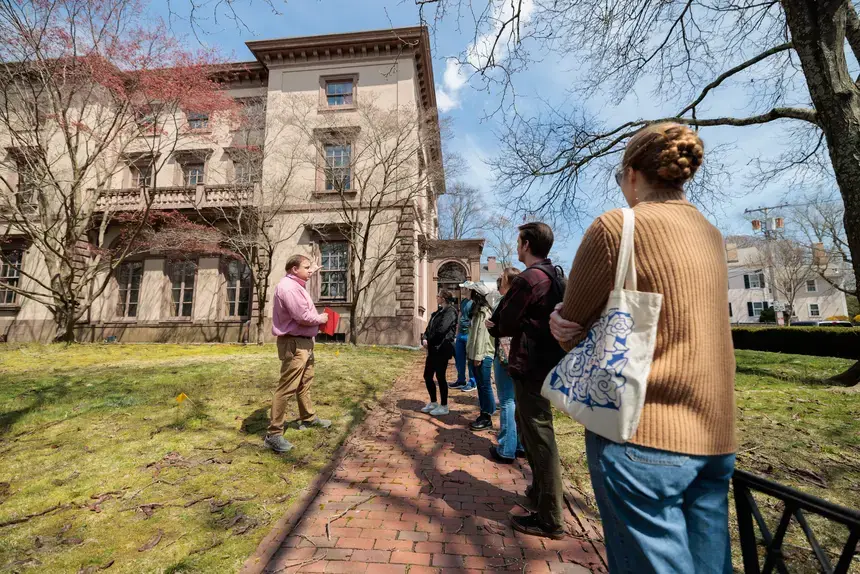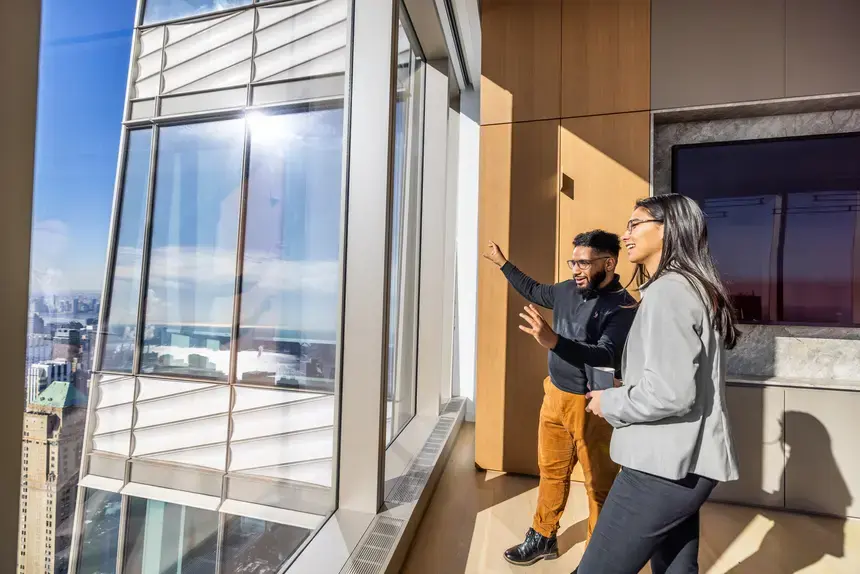About the Architecture Major
QUICK LINKS
Architecture Facts

Placement of 2022 Grads
Our 2022 Cummings School of Architecture graduates found success in employment or in graduate school within 6 months of graduation.

With Our Accelerated Master’s Degree
Our students have the opportunity to efficiently earn an M-Arch degree in 5 1/2 years with the highest, most prestigious accreditation.

Internship Certainty
Cummings Students participate in the Career Investment Program, providing paid student assistantships on or off campus, with firms, organizations and government agencies.
Architecture Degree Requirements
Portfolio Submission Guidelines
A portfolio of two and/or three-dimensional work demonstrating evidence of an applicant’s creative potential is required for all applicants for admission to the B.S. in Architecture program.
Powerful Combinations with Architecture
Add a Sustainability Studies Minor
Many Architecture majors choose to minor in Sustainability Studies. At RWU, Sustainability Studies is all about seeking solutions to the Earth’s most pressing problems. By combining ideas from a variety of disciplines — from science and humanities to business, engineering and architecture — you’ll develop a deeper understanding of the complex relationships among environmental, social and economic issues that will help guide your decision-making in your career and as a 21st-century citizen.
Add a Real Estate Certificate
RWU is launching a powerful new curriculum that prepares graduates with expansive skillsets and perspectives to meet the multi-faceted challenges of real estate. In addition to the upcoming launch of a graduate certificate, other programs are in development. Through the Cummings Institute for Real Estate, students will become leaders in sustainable and equitable design, development, business operations, public policy, and fair housing advocacy, with thriving careers across many real estate-related businesses and professions.

Master’s In Architecture Program (M.Arch)
The NAAB-accredited Master of Architecture program prepares students to enter and advance both the discipline and the profession of architecture, providing a rigorous professional training in design, history, planning, and technology while helping students develop critical strategic thinking and communication skills to tackle a range of issues from sustainability and urbanism to historic preservation.
Architecture Mentoring Programs
First-Year Mentoring
The Cummings School of Architecture assigns two upperclass mentors to help first-year students adjust to college life and specifically the architecture program and studio space. With additional from faculty and administrators, the mentorship program is a critical component of community-building within the Architecture program.
Student Athlete Mentoring
The Cummings School of Architecture has a specific mentorship program that is the only one of its kind in the country — the Student Athlete Mentor Program for Architecture students. The program works closely with student-athletes, the athletic department and the faculty to coordinate time management and scheduling, facilitating the balance of each individual student’s academic studies and their intercollegiate athletic activities.
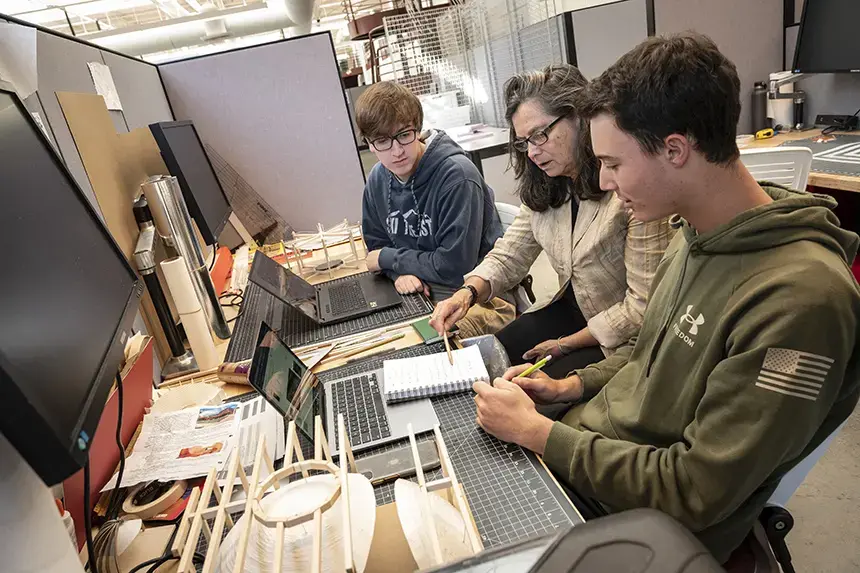
Guaranteed Funding for Internships and Assistantships
All Architecture students participate in the award-winning Career Investment Program, which provides financing for undergraduate and graduate student assistantships on-campus and professional internships off-campus with firms, organizations and government agencies. These funded opportunities provide students with valuable research and professional experiences as they approach their advanced study and future career placements.

Architecture Facilities and Learning Spaces
Study Architecture, Art and Architectural History, Preservation Studies, Preservation Practices, Real Estate, and Urban and Regional Planning in our NEA and AIA award-winning 65,000-square-foot building, originally opened in 1987 and thoroughly renovated in 2021. The design of the building balances individual study and work, group collaborations, and events.
Samsung Design Studio
Through a major gift from Samsung, our design studios – mirroring environments in professional firms – host 450+ undergraduate and graduate students in Architecture and Preservation Practices in individual studio spaces, along with 20+ collaborative workspaces with multiple shared worktables, seating and pin-up spaces.
Technical Facilities
Our technical facilities include a shop for materials testing and projects, DM Lab with multiple laser cutters and 3D printer equipment and spray booth, a photo shooting studio, and a print room that provides free printing and plotting for students.
Architecture Library
The Architecture Library is one of the best in New England in terms of its physical and digital collections and is a sought-after study space for students. The library also includes individual carrels for Preservation Practices graduate students.
Teaching Firm in Residence
The Teaching Firm in Residence is a highlight of the Cummings School of Architecture, which brings the highest quality educator practitioners from Boston, New York and elsewhere in the region, across the country and abroad to the Bristol campus to work directly with students for an entire semester. They participate in teaching graduate design studios, studio lectures, design review critiques at both RWU and on-site at the firm.

Study Abroad in Italy or Spain
Spend a semester in Italy during your junior or senior year studying Architecture in Florence at the Palazzo Rucellai, or in Barcelona at the Barcelona Architecture Center. Roger Williams University’s Florence study abroad program includes classroom, art studio and design review space at the Palazzo Rucellai, a landmark of the Renaissance, designed by the renowned humanist and architect Leon Battista Alberti and erected between 1446 and 1451.
While abroad, students take courses, learn in a studio setting, work with multinational faculty and European firms, travel to other European cities, and engage with international students. Students remain enrolled as full-time students at RWU, and financial aid applies to their semester abroad.
Hear from Hawks

Grayson Scanlon '22
“Roger was the only school I applied to. I did a summer Architecture program here in high school. What stood out before I came here: there is an extreme level of personalness between student and professor. They do a great job setting all Architecture students up for whatever career path they want to pursue. They teach you to understand how design works and how spaces influence people.”
Grayson Scanlon '22
Junior Architectural Designer and Drafter at A4 Architecture in Newport, R.I.

Elias Christo '18 '20M
“I underestimated how my professional network would expand from being a student. I was fortunate enough to now have two internships with two different professors, as well as do freelance work for others. In professional architecture community, Roger Williams has some serious name recognition and firms have always told me that they've had great experiences hiring and working with Roger Williams students and alumni.”
Elias Christo '18 '20M
Designer at Hutker Architects, Inc. In Falmouth, Mass.

Shannon DeFranza '21
“A Liberal Arts education teaches you how to think, not what to think. The critical inquiry that I’ve learned has helped me know how to progress to the next steps in my career. Roger helped me learn how to question the world around me and not just take things at face value, and showed me there is always room for improvement and ways to evolve.”
Shannon DeFranza '21
Vice President at American Institute of Architecture Students in Washington, D.C.

Juan Osorio '19 '20M
“The best experience is that the school brings in professional architects from different businesses and different firms to teach. Roger has a successful program because we get to work with actual architects who are working in the field.”
Juan Osorio '19 '20M
Designer at Summit Design and Engineering Services in Cary, N.C.

Student Work
The Architecture Design Core Studios I, II, III, & IV are crafted in a progressive learning sequence based on themes. The themes have basis in the humanities, where architecture and its various modes of expression can be understood as means to document, record, process and re-cast the human experience to the built environment. Students are immersed in the studio learning environment where they develop critical thinking, design communication and representation skills, building practices, technical skills, professional practices and asked to contribute to the making of a global knowledge of architecture. Through this understanding we approach the studio as place to practice, to ply one's craft, and develop the discipline necessary to lead the profession of Architecture. Studios include Core Design Studios, Advanced Option Studios, Urban Studios, Graduate Option Studios, Integrated Design Studio, and Thesis Design Studio.
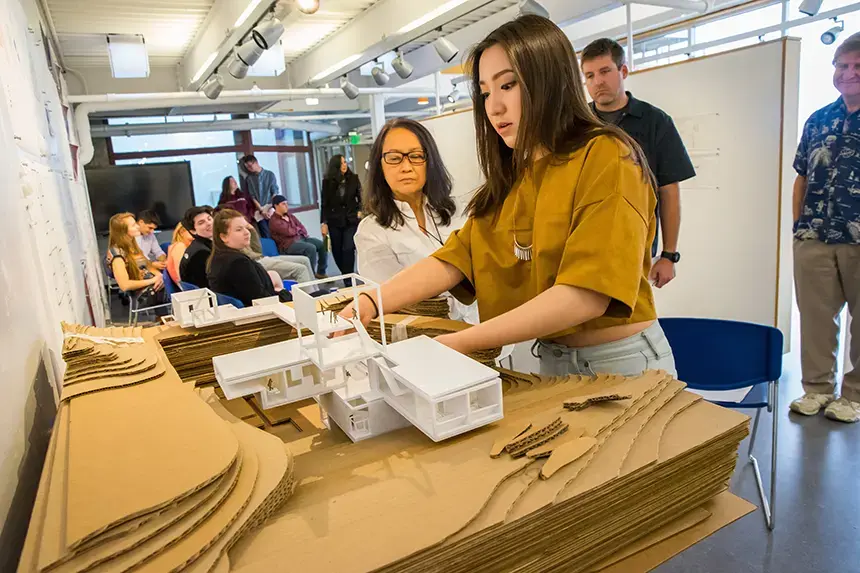
Architecture Student Clubs and Organizations
American Institute of Architecture Students
RWU’s chapter of the American Institute of Architecture Students (AIAS) is one of the largest chapters in the country and organizes lectures, programs, conferences, and excursions. The goal of the student-run AIAS is to promote excellence in architectural education, training, and practice; to foster an appreciation of architecture and related disciplines; to enrich communities in a spirit of collaboration; and to organize students and combine their efforts to advance the art and science of architecture.
Women's Leadership Network
The Women’s Leadership Network (WLN) connects students and alumni with leading faculty members and practitioners to provide mentorship, host events, and support female Cummings School of Architecture students and alumni in program success, career placement and advancement. The WLN supports female graduates and young professionals through career placement, advancement and satisfaction.
National Organization of Minority Architecture Students
RWU's chapter of National Organization of Minority Architecture Students (NOMAS) advocates for the growth and implementation of justice and equity within the architectural profession and the campus. NOMA's mission, rooted in a rich legacy of activism, is to empower our local chapters and membership to foster justice and equity in communities of color, through outreach, community advocacy, professional development, and design excellence.
Cummings School of Architecture Events Series
Each semester the school hosts lectures and exhibitions featuring notable people and their work from the region, country and world.
Follow Cummings School of Architecture Instagram

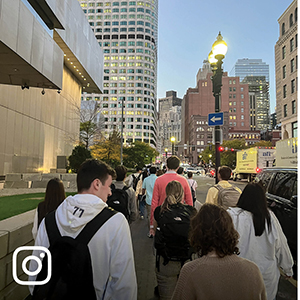
Check out the Cummings School of Architecture's Instagram for school news, events, and more. Pictured are shots from a recent Architecture firm crawl in Boston held in collaboration with RWU's Center for Career and Professional Development.
The Cummings School of Architecture boasts an esteemed faculty of renowned artists, architects, authors, planners, historians and scholars from around the world. Experienced hands-on professionals, many of who have published in numerous scholarly and industry journals, our faculty is directly involved with all aspects of educating our students: from classroom lectures and demonstrations to field trips, installations and real-world projects in the community and across the globe.
Test Title
Copy example





